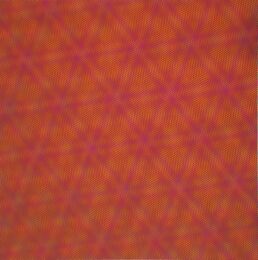

Throughout his career, Josef Levi has made works that concern the act of looking at art and that challenge the idea of permanence. Through both non-objective and naturalistic means, he combines established forms and ideas that meet in a new, unproven middle. His aesthetic judgement and technical skill make these works consistently beautiful, and his knowledge of the history of his craft make many of his works both thoughtful and amusing.
Josef Levi graduated from the University of Connecticut in 1958. He then joined the army, and stayed in the Reserves until 1967. During his years of military service, Levi both worked as an artist and studied the history of art. At Columbia in 1959, he took classes with Howard McParlin Davis, an art history professor famous for his vivid manner of teaching the art of the Renaissance. Even before his discharge, Levi was receiving recognition for his work. After a few years of teaching and serving as artist in residence at a number of schools, Levi returned to his hometown of New York and devoted his time entirely to making art.
Beginning early in his career, Levi worked in an elegant minimalist mode. Grids composed of delicate narrow lines occur in both his graphic and sculptural works of the early 1970s. Op-art prints of subtly meshed patterns in contrasting colors call to mind the plaids of woolen textiles. They suggest the texture of woven fabric as well, with a fuzzy focus that creates an illusion of depth and movement. Uncertain borders between apparently distinct spaces are also a part of his light box sculptures. As these project light through screens as finely perforated as filigree, edges blur. The places where disparate things encounter one another would remain an interest throughout Levi’s career.
In the mid-70s, Levi began a series of prints incorporating human figures famous from art history. At first glance, these may seem entirely realistic images, yet they combine traditional still life elements in ways that challenge the genre. Levi, an excellent draftsman concerned with formal matters of balance, color and line, depicts each element accurately. However, the spatial, and therefore temporal, relationships of the objects he includes become at crucial points ambiguous. What is real and what is fictive grows less clear the more the viewer considers the space.
American, b. 1938